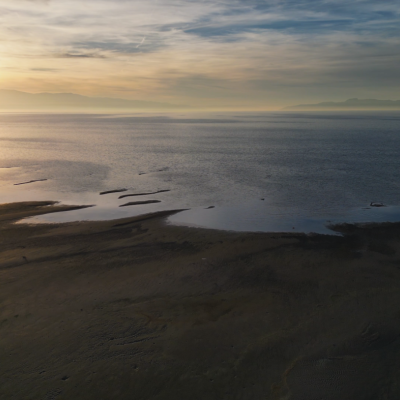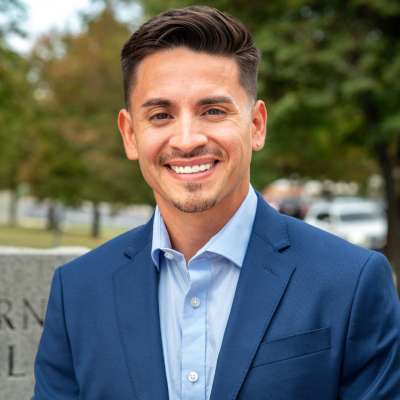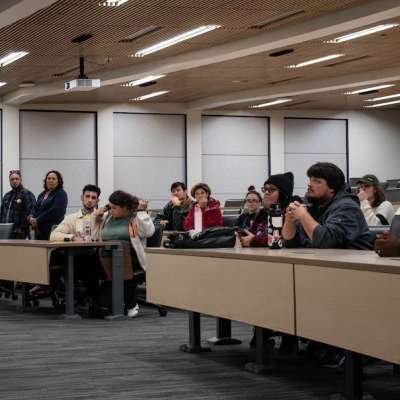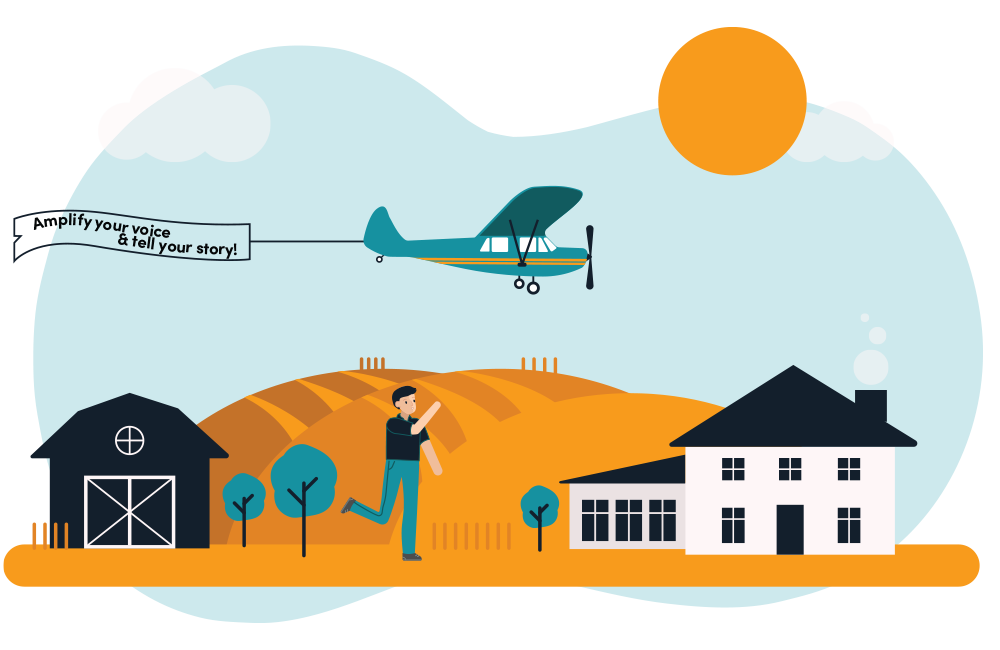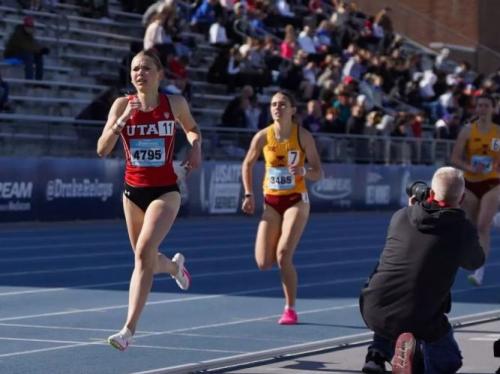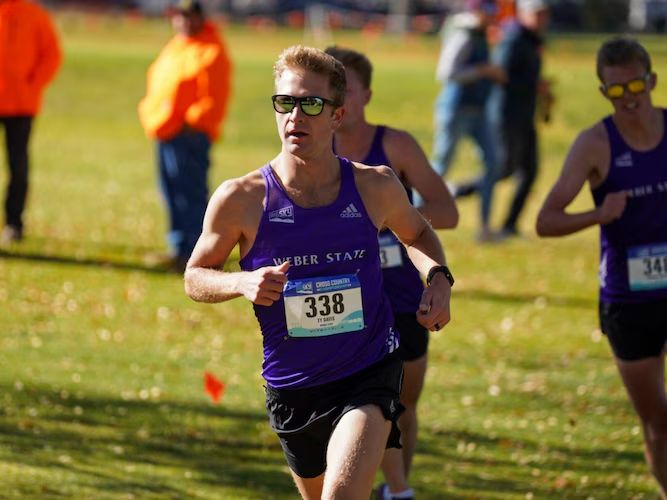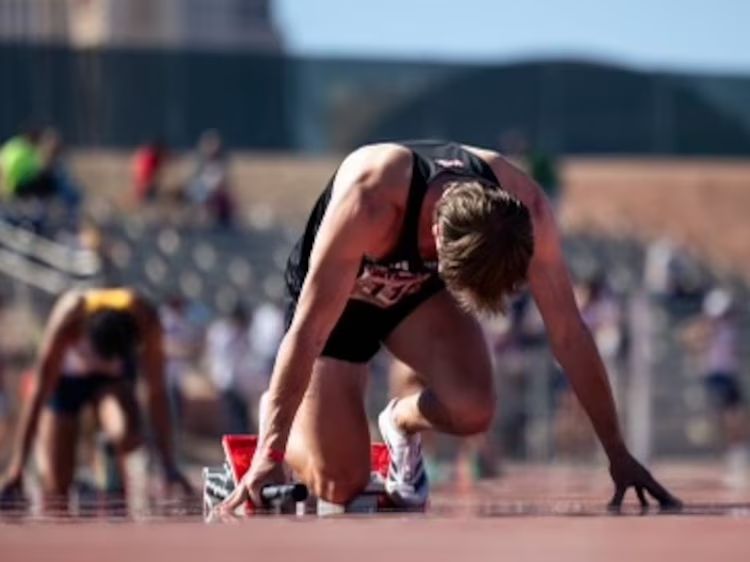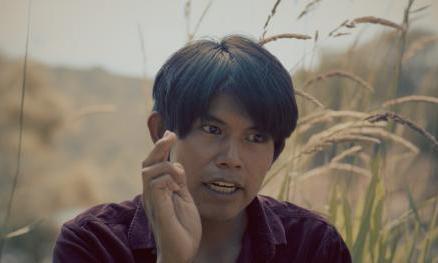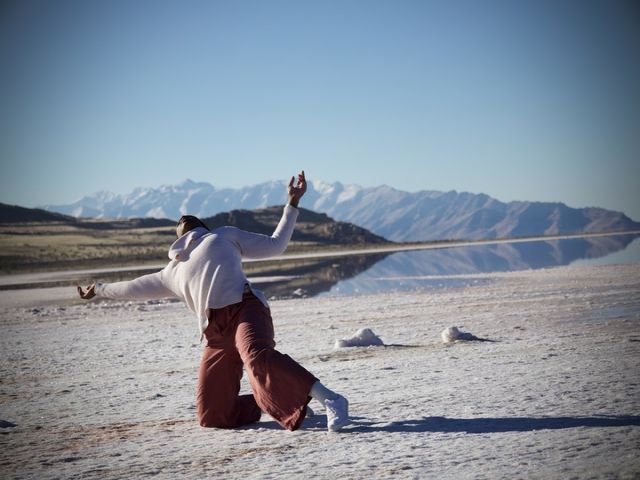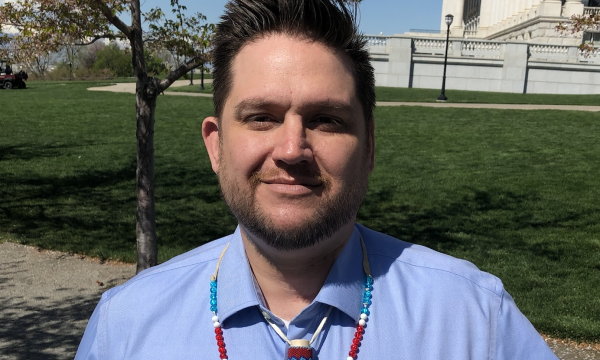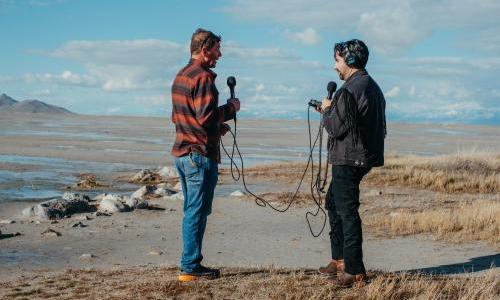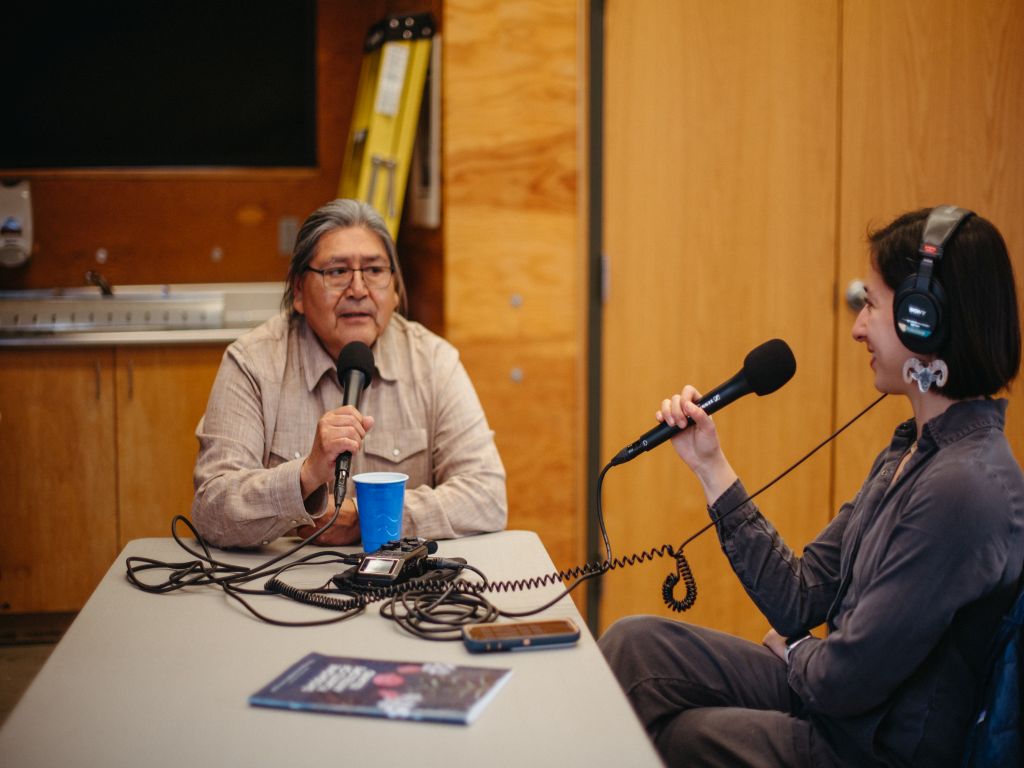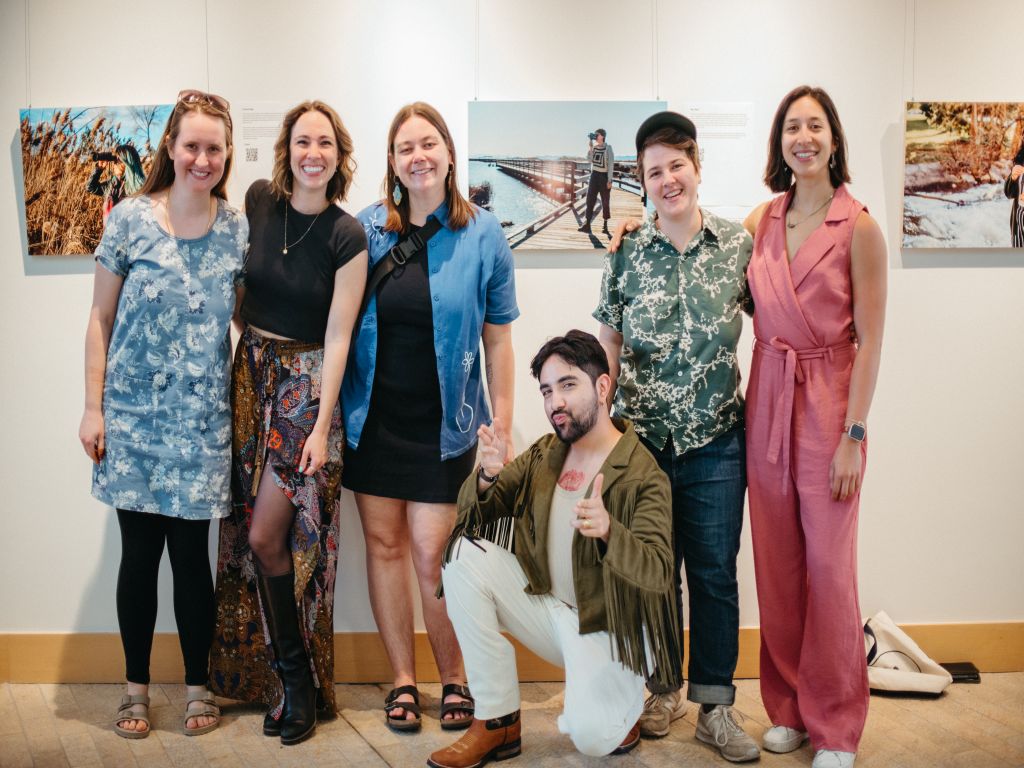During the Bear River Massacre in 1863, around 200 U.S. Army soldiers killed at least 350 Shoshone men, women and children. It was the largest massacre of Native Americans in U.S. history, with some estimates saying the death toll was closer to 490.
Now, the restoration of Wuda Ogwa, the site near Preston, Idaho, along the banks of the Bear River and where the Bear River Massacre happened, is underway by the Northwestern Band of the Shoshone Nation.
“Cultural healing is the reason we started … to heal that land there,” said Brad Parry, vice chairman of the Northwestern Band of Shoshone and natural resources program manager. “At the time we camped there in 1863, it was free-flowing.”
His ancestors could catch trout in the Bear River and hunt deer, elk and all sorts of waterfowl nearby, Parry said.
“We want to start that place over as a happy place, as a place you want to visit for the right reasons,” he said. “Right now, it's a graveyard. It's a cemetery. It's a place where something extremely bad happened.”
In 2018, the tribe purchased over 500 acres around the massacre site and is in the process of acquiring more. To restore the site to how it was in 1863 and before, the tribe is using historic aerial photography and written accounts of the site conditions, Parry said.
The project includes stream restoration efforts, digging a new wetlands pond, removing invasive species and planting native plants, he said. The construction of stream restoration structures along the Battle Creek Tributary are expected to begin in May 2024.
In his project grant application, Parry said the restoration “will improve overall water quality in Battle Creek and in Bear River," according to Great Salt Lake Collaborative partner, KSL.com. He estimated the project will send about 13,000 additional acre-feet of water to Great Salt Lake every year.
The project is expected to be completed by the fall of 2026.
The tribe also plans to build the Boa Ogoi Cultural and Interpretive Center, which Parry said will feature interactive and educational experiences about Shoshone culture and history to commemorate the massacre.
The Great Salt Lake Collaborative spoke with Parry about the importance of the restoration project to the tribe, its relationship with the lake and Bear River, and his views on how local media covers these issues.
This conversation was edited for conciseness and clarity.
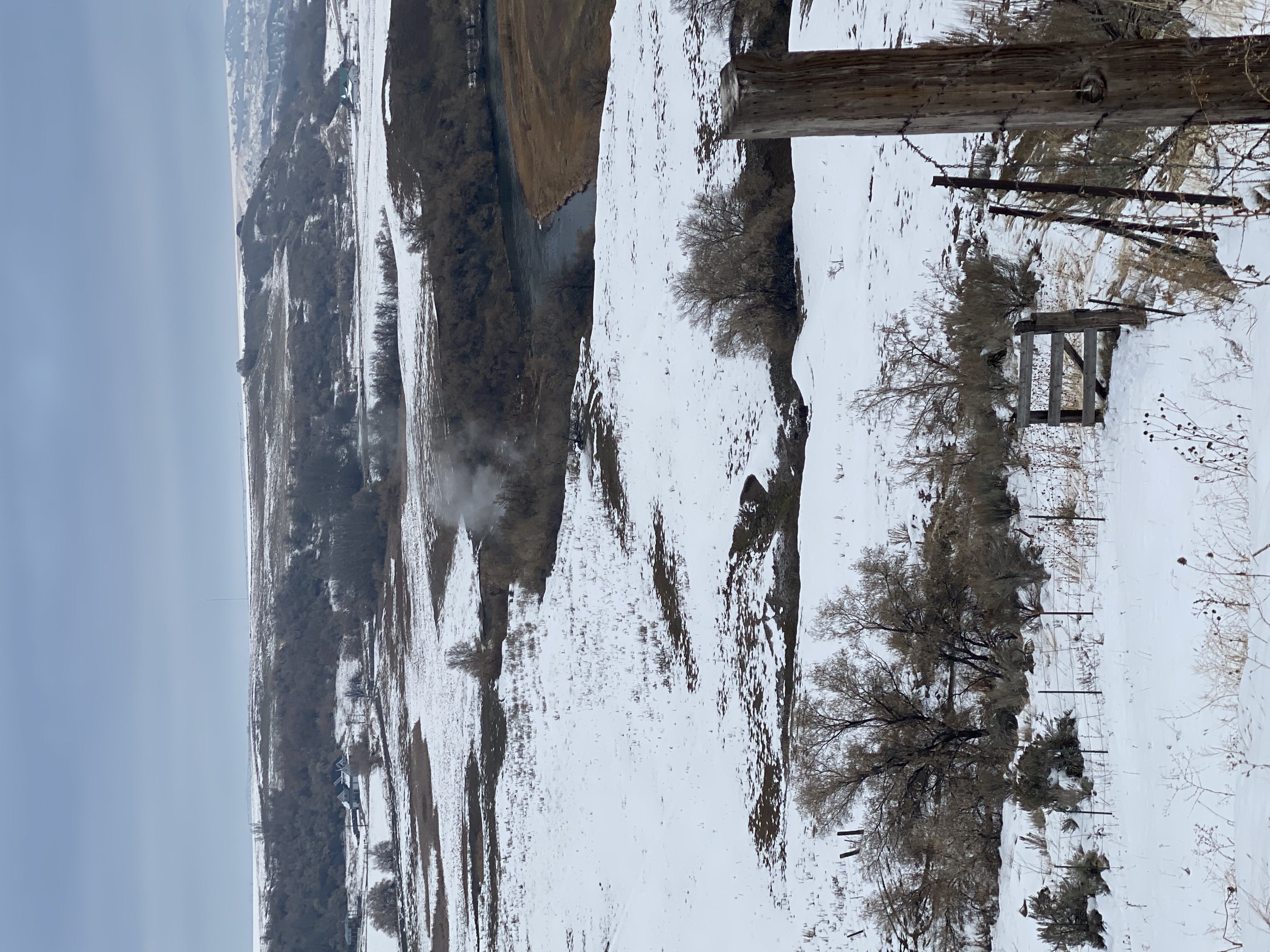
The Bear River Massacre site (as pictured on Jan. 29, 2024) is being restored by the Northwestern Band of Shoshone and collaborators to culturally heal and provide more water to the dying Great Salt Lake. (Photo: Brad Parry)
Concerning the overall importance of water to your tribe, history and culture, how do you see the restoration of Boa Ogoi contributing to both environmental and cultural healing?
“Cultural healing is the reason we started it … After the massacre, we were either buried on that land or left. And as agriculturalists came in, they brought in silt, dirt and smoothed that out, and basically just changed the landscape … Our ancestors knew it as an extremely happy place to go because of the warm dance, [and] a lot of food, a lot of sustenance. It just makes sense that if you're going to heal something, you start with the natural — you remove the invasive [plants] and plant natural things and let the water do what it wants … So, there's going to be an unintended consequence of water coming down to the Great Salt Lake.”
Can you please elaborate on the Northwestern Band of the Shoshone Nation’s efforts in restoring this area and its importance?
“That's how we teach. It's hard to teach somebody how to grow medicine plants and harvest and use them inside of a building. [With the restoration], we can teach our kids, ‘This is how we do this … this is how you gather it, this is how you use it.’ … We can start to flip the narrative and change the landscape … We've got a lot of partners and a lot of people who donate time and work with us … The community has changed. And so that's what we want to do – rejuvenate the place, so it has that spirit … of welcoming. It's hard to start to feel welcome at a massacre site, you know?”
What’s the significance of the Bear River to the Northwestern Shoshone?
“It was a major life source for us. We camped along the banks basically from where the Bear River massacre site is to all the way down to the Great Salt Lake. You travel with water, and the [nearby] Bear Lake produces fish. There are wetlands that were all around it, willows, so we could fish and hunt birds. And then, with the amount of willows and cattails and other things around there, we could make camp anywhere … We could always use those things to make temporary homes, wickiups.”
What is your personal connection to the lake as well as its significance to your tribe?
“I'm from Syracuse, Utah, so the lake was always a landmark to me. We would travel the Bear River and we would camp at Promontory Point, right on the banks of the Great Salt Lake because Chief Segwich – my great, great, great grandfather – was in charge of the rabbit hunt for all bands of the Shoshone. We would get together for rabbit hunts, salmon run, buffalo hunts, deer hunts and eat … I've seen [the lake] fluctuate, but I've never seen it this low …I can speak for my ancestors [when I say] that if they saw this, they would be concerned because they would worry about the loss of wetlands, the loss of wildlife and waterfowl. The loss of being able to collect clean salt and doing those sorts of things. It's really important that we take all of those factors in when we talk about the Great Salt Lake. It's not the lake itself, it's what it produces.”
What have been the biggest challenges and successes the tribe has faced in reclaiming and restoring its ancestral lands?
“There really haven't been blockades. We've got several people we've received grants from. I think the hardest part is just finding those big grants that allow you to do the work. It's challenging because you have to get so many people on the same page when you're using federal money or state money or private donations … It took three years of planning to get to the point where [we could start construction] … Now we're ready to really put in the work … We’ve [also] had volunteer days to come out and plant trees with the community. It's been wonderful. We've been able to talk to people about why we're doing the restoration and how it helps [educate].”
How have you approached making sure your collaborators understand what’s being done and why it’s being done?
“To work with us, you just have to respect our beliefs. This has been 100% indigenously led, and we try to include people who are interested in that and who have a high respect. We're running our own project — that's the biggest thing, no one's doing this for us. We've hired everybody – we've done everything – and so this is truly a tribal project. That's been really important to us. In asking for help from people, we make sure that they're on the same page and that they want to do the same things that we do.”
Where do you place environmental issues at Great Salt Lake in your list of priorities?
“A lot of people want us to come out and lead the charge [on issues related to] the Great Salt Lake, and that's just not how it's done. The lake is important, it's important to everybody. And, so, [we’ve] chosen to work with the state and their leaders and water districts and just talk. We don't have any land around the Great Salt Lake. We have very few water rights that go to the Great Salt Lake. All we can do is suggest [things]. My biggest suggestion to the people in Utah is, if they support our project, we'll [be able to] send Idaho water to the Great Salt Lake… We believe in [improving things in a] natural way … We also know when to get out of the way … I don't know that our voice is any more important than the people — you know, the farmers that depend on the water and the snow it produces when the Great Salt Lake’s full. All of us have a good argument for wanting it there.”
What else do you think can be done to save the lake?
“Honestly, conserve water, pray for rain. That's really the only thing we can do … How do we figure out how to conserve water so the farmers are happy, so the city users are happy, the Indigenous people are happy and the leadership is happy? … Everybody knows the lake’s there, everybody knows it's dropping, and people are having protests. I mean, it’s really kind of time to shut up and put our money where our mouth is and just start building projects … [People] have to work together and come together as a community. We need to figure that out.”
How would you describe your interactions with journalists as the lake has garnered more attention in recent years?
“I've done several interviews. I've spoken at certain things, and it gets published online. I think our stance is out there. People keep calling us and saying, ‘Well, I want your perspective.’ … We've been talking about it for three years. Nothing's changed — we need more water to the Great Salt Lake. We're always interested in people who want to understand [culturally] why we're doing it … so we take time to explain that. And it's really just a simple concept — remove invasive [plants] and replant native and let the water, let Mother Earth heal itself, let it take over. That's culturally and spiritually what we believe – [let] the stuff all live in harmony. Not everybody thinks that way, and that's fine … People [have] to start working together and see what possibility could be there. It's a political thing, it's a community thing, and that’s sometimes hard to do.”
What do journalists often get wrong?
“A lot of times people will contact us and say, ‘Hey, we're about to give you a voice’ and that's super offensive. We have a voice — I can get on Gov. Cox's [or Great Salt Lake Commissioner Brian Steed’s] schedule in about 10 minutes if I see something … I have those contacts because of what I do and who I am with the tribe. What we want people to understand is that we support increasing the level of the lake. We don't have all the answers … People keep thinking that we need to lead the charge, and we don't. People don't understand how exploitative that can be … We're doing what we're doing, and at the end of the day, that is going to help the Great Salt Lake.”
What would you like to see journalists do differently?
“Unless we call you, don't call us. I mean, quite honestly, we'll reach out if we have something to say … We're not more special than anybody else. What we would care about is if people come out to take a look at what we're doing and then write the story we tell them instead of trying … to use us [as] the voice of the Great Salt Lake. We don't want to do that … It's always been hard between Native Americans and journalists. There's just not that relationship because we've been misquoted so many times. And that's why we take over our own media … people just get [things] wrong.”
Looking ahead, what are the priorities regarding land restoration, cultural preservation and environmental sustainability?
“We'd like to acquire more land along the Battle Creek corridor and around the Bear River massacre site and kind of update them the same way we did, culturally, to keep that preservation and to keep learning and teaching … Since we've never had a reservation, we want to obtain lands for a reservation and kind of see what we can do to upgrade [and help us] … with our cultural preservation … [As for] environmental stability, we're hoping that everything we do will continue to keep the environment better. We just want to keep doing more. The more we do, the longer we can, the longer the state's sustainability. The more we do upstream of the Great Salt Lake, [more and better water will] flow into the Great Salt Lake … Our sustainability is to get to the point where we've done all of this restoration – and have moved it along and monitored it and cultivated it – so, in the future, it just runs on its own.”
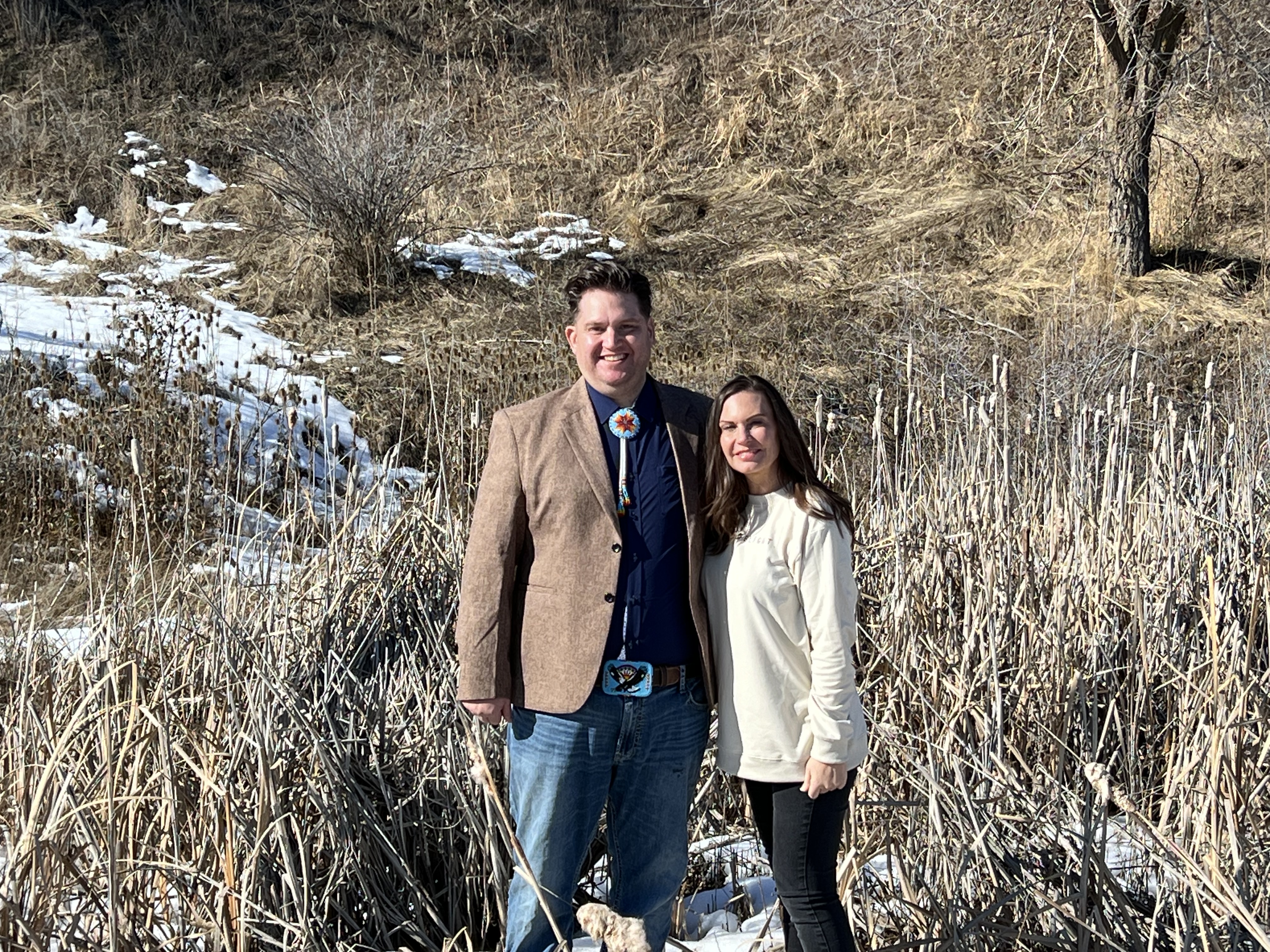
Vice Chairman of the Northwestern Shoshone Tribe Brad Parry and his sister, Angie, at the Bear River Massacre site on Jan. 29, 2024. (Photo: Clint Barnes)
***
Andrew Christiansen, a senior at the University of Utah, wrote this story as part of a College of Humanities journalism course in partnership with the Great Salt Lake Collaborative and Amplify Utah. The collaborative is a solutions journalism initiative that partners news, education and media organizations to help inform people about the plight of the Great Salt Lake – and what can be done to make a difference before it is too late. Read all of our stories at greatsaltlakenews.org.







